Italy, second half of the 19th century
Attributed to Ignazio Giacometti (1825–1894)
Finely carved full-round sculpture in white Carrara marble, depicting the biblical moment of Judas Iscariot’s betrayal of Christ through a kiss. The figures are life-sized, captured in the suspended instant of the kiss: Christ, with downcast eyes, receives the gesture with solemn resignation; Judas, intensely expressive, leans forward in a gesture of false affection that conceals treachery. The craftsmanship is of remarkable quality: the drapery falls with natural softness, facial features are rendered with subtlety and psychological depth, and the anatomical modeling of hands, feet, and hair reveals a fully academic sculptural mastery. Especially notable is the detail of the money pouch clenched in Judas’s fist—a direct symbolic reference to the price of betrayal. Based on compositional structure and stylistic proximity, the work may be attributed to Ignazio Giacometti, renowned for his monumental Kiss of Judas group preserved at the Scala Santa in Rome. Though smaller in scale, this version shares the same narrative clarity, emotional restraint, and balance between dramatic intensity and classical poise. A highly evocative and technically refined work, representative of late 19th-century Italian devotional sculpture.


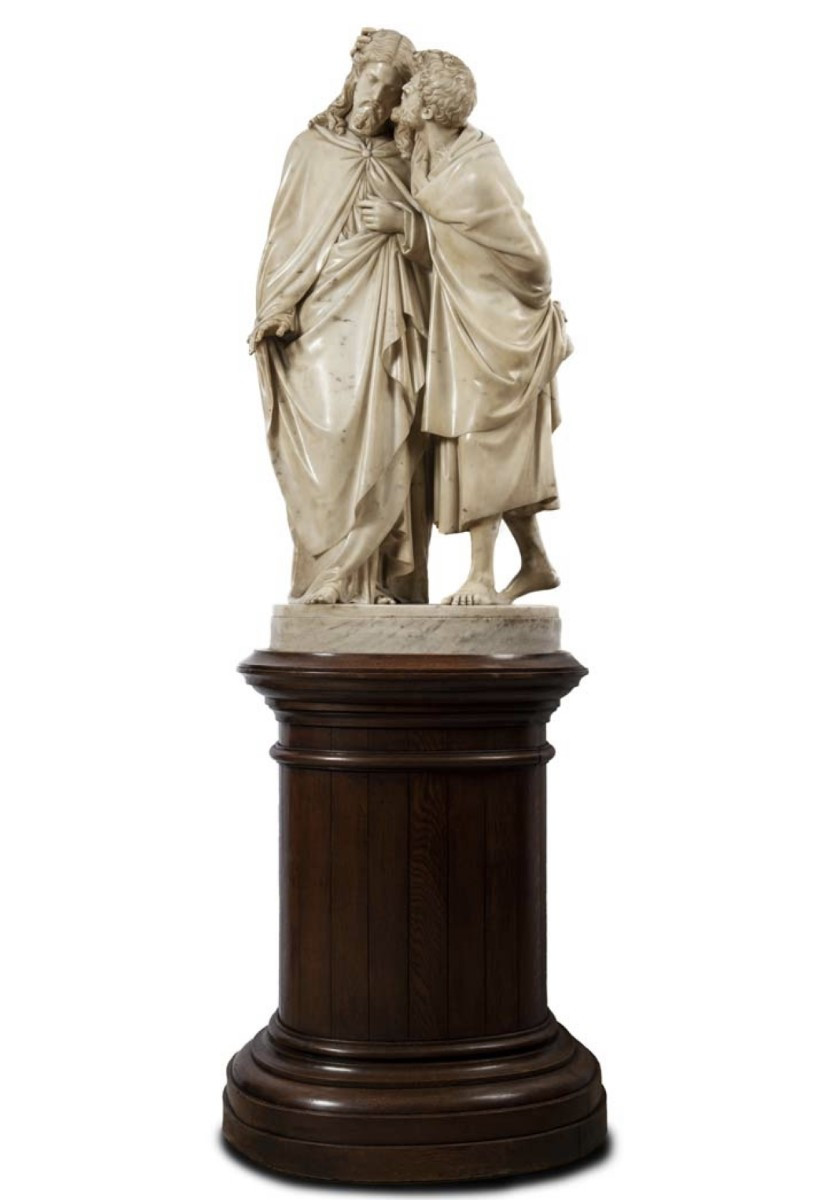
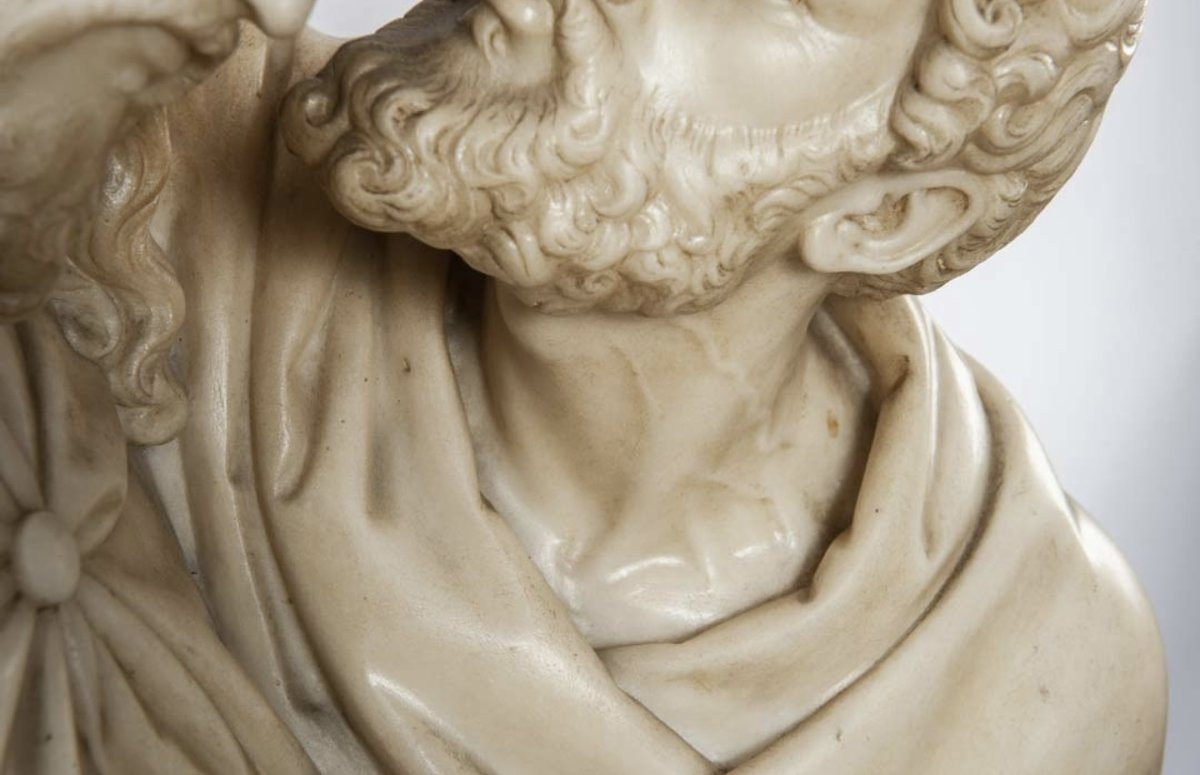
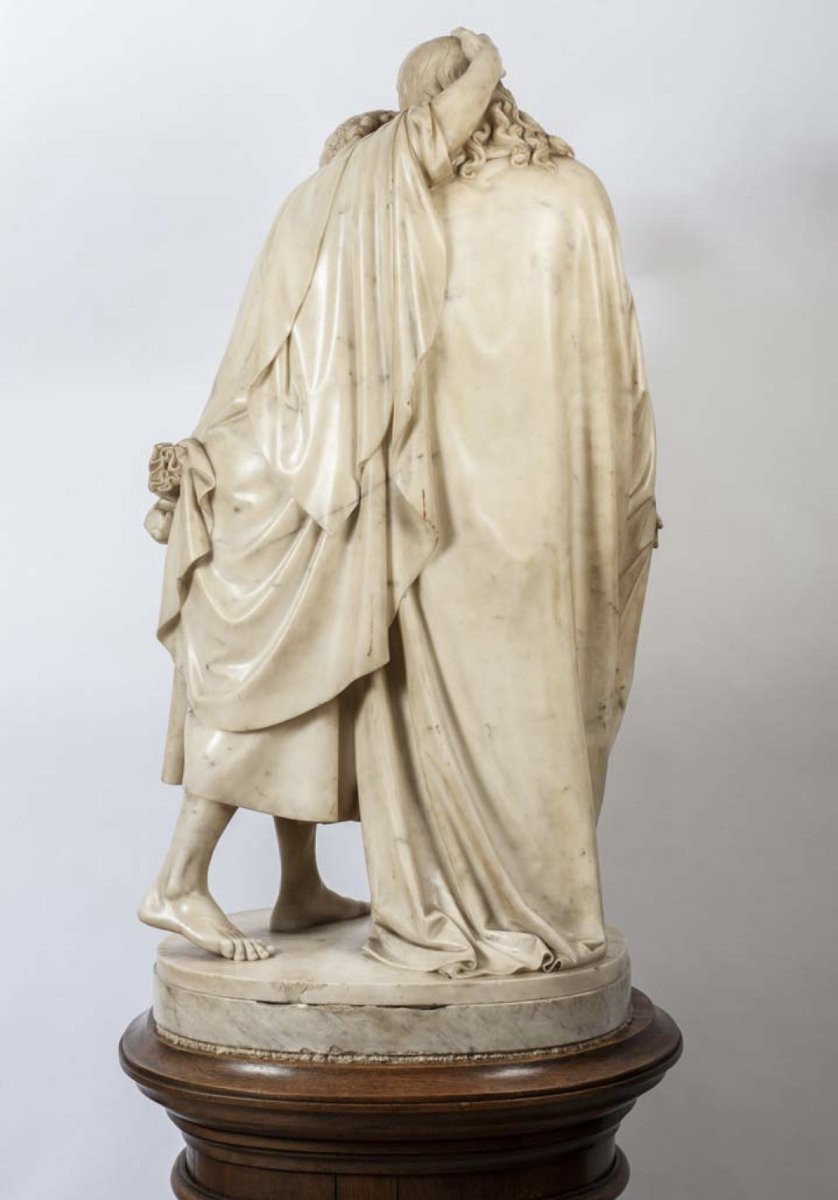
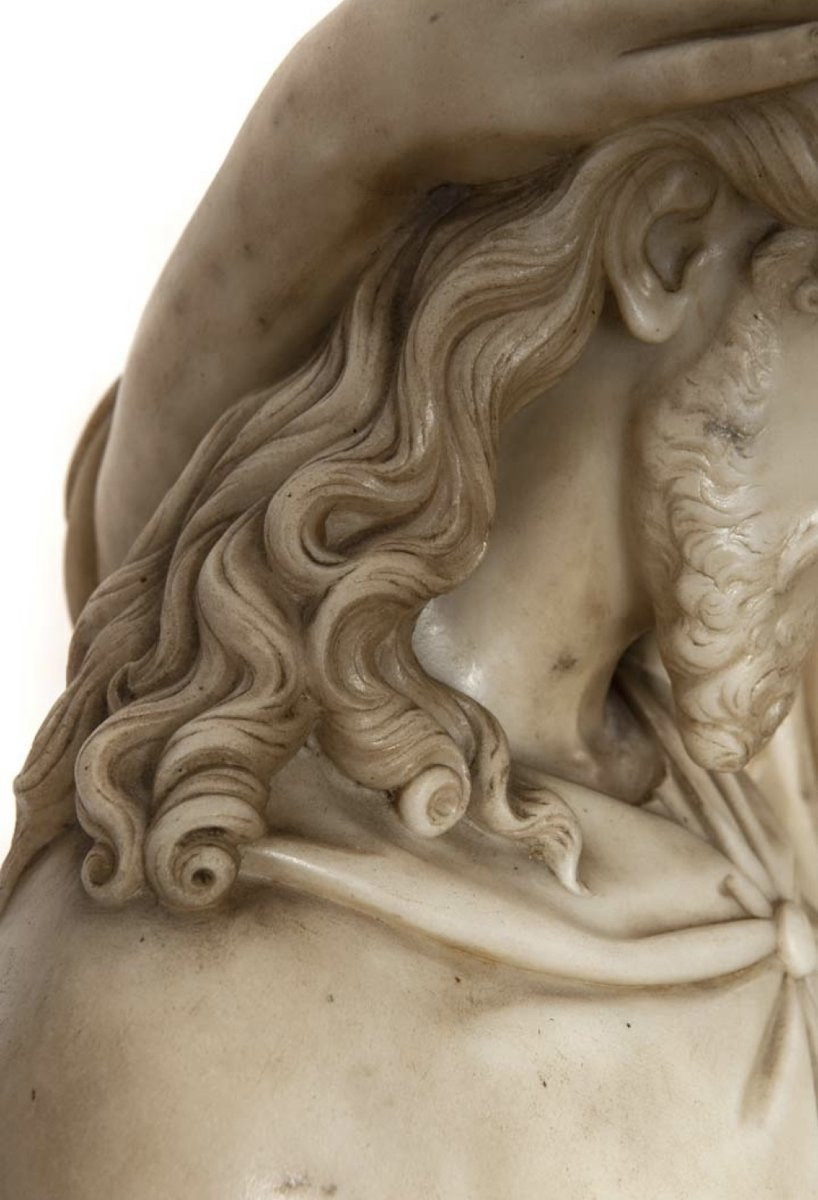
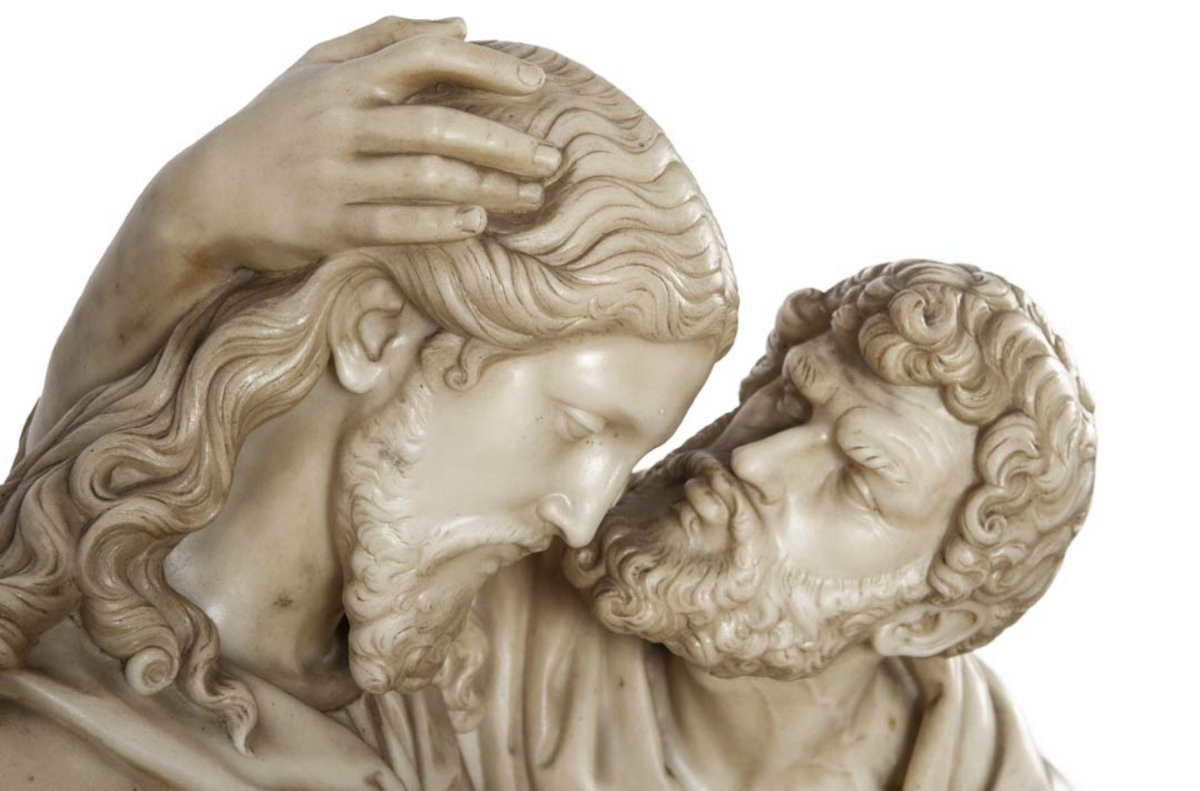
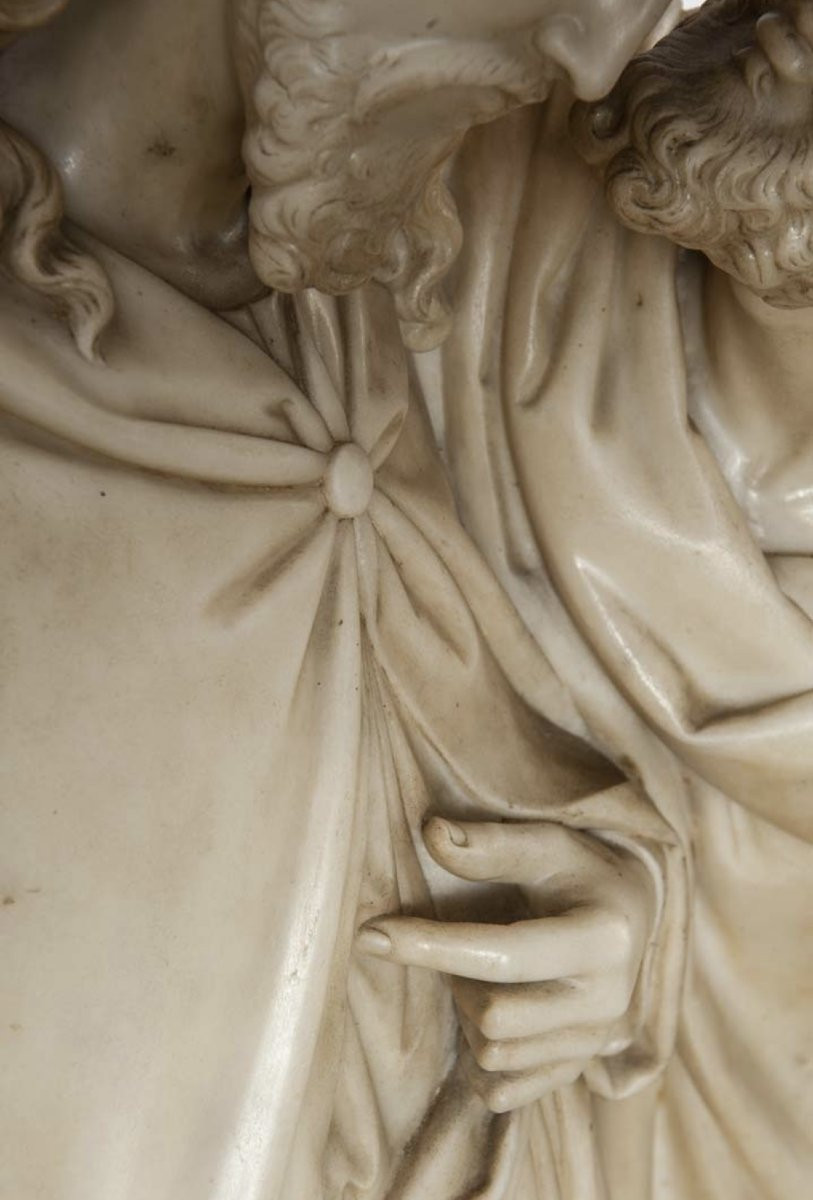
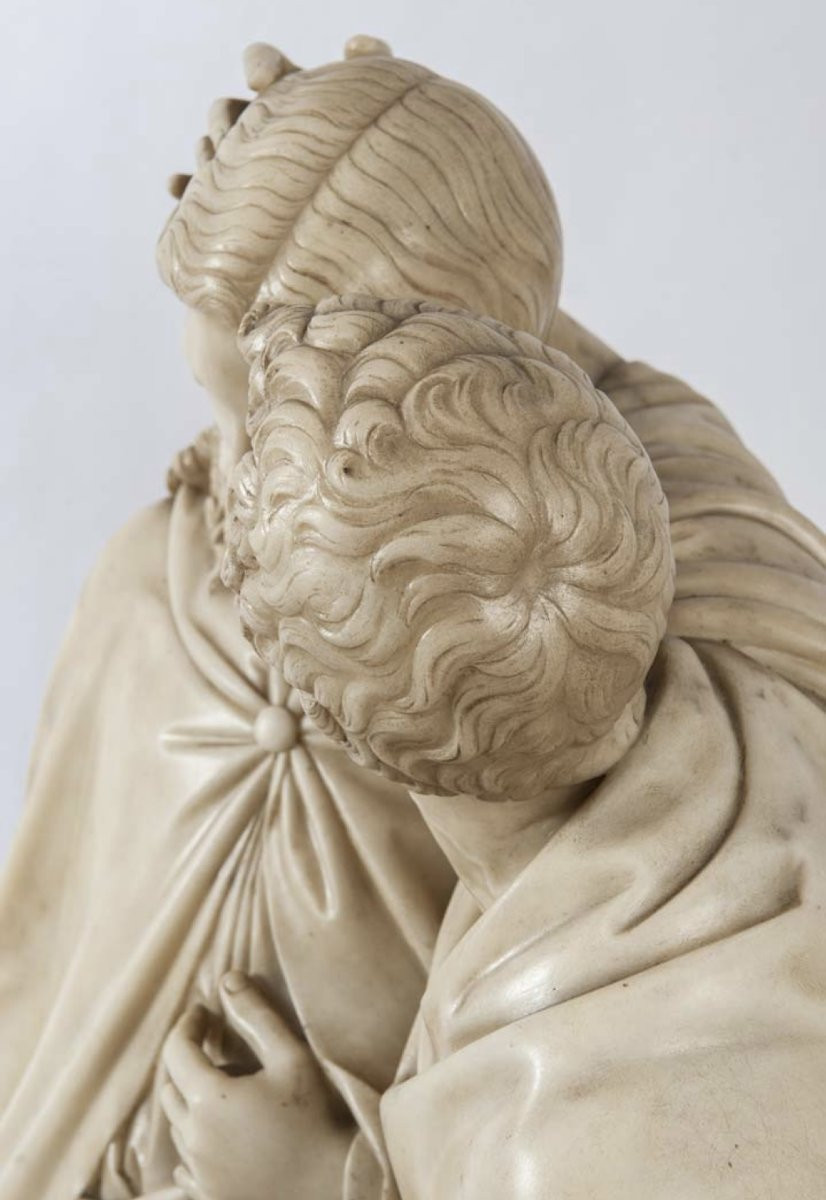
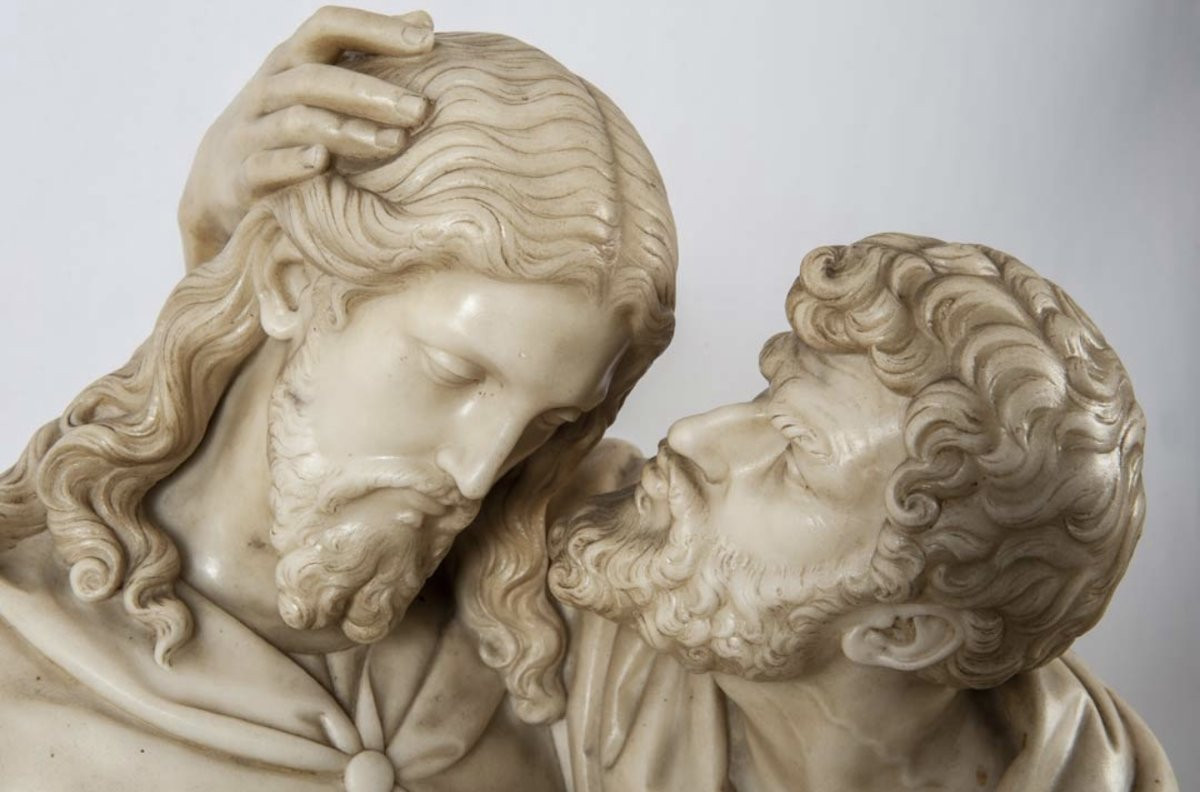
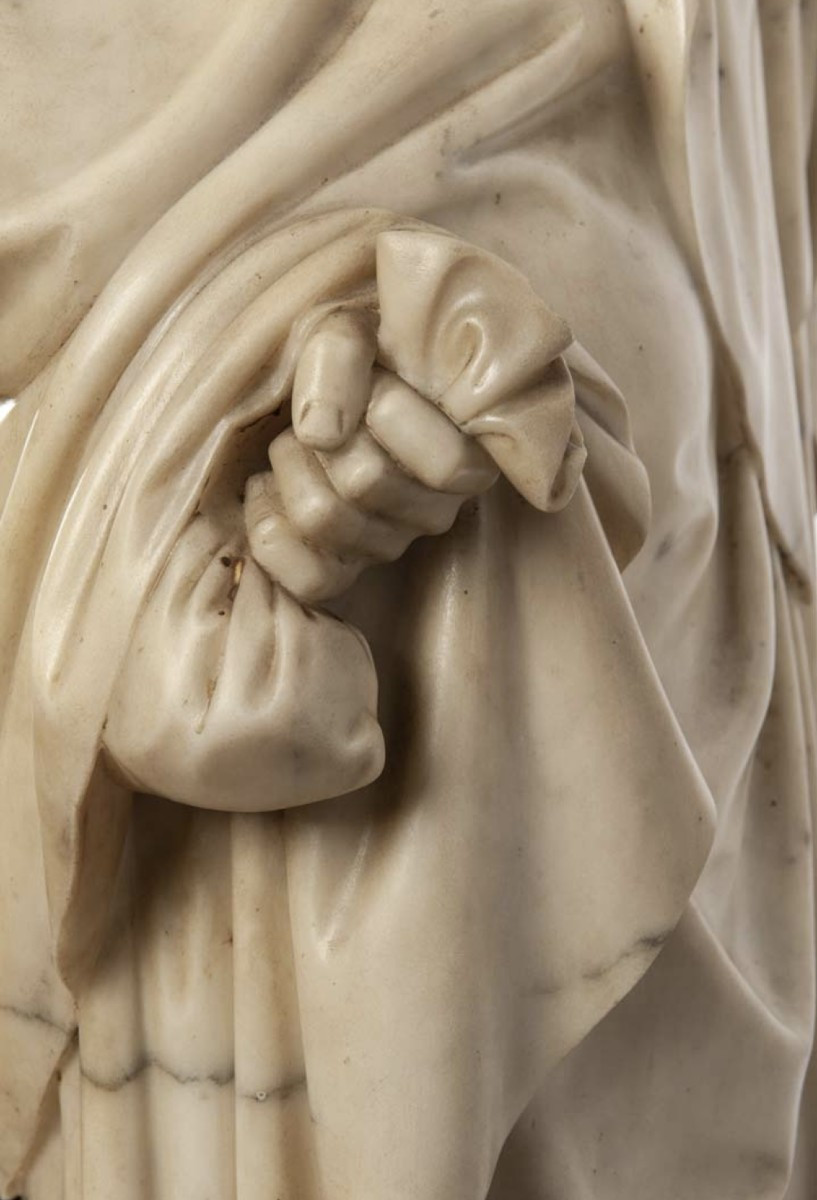















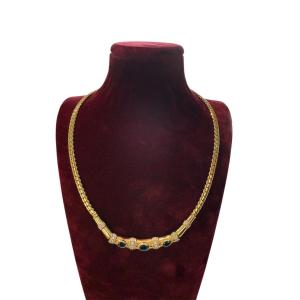

















 Le Magazine de PROANTIC
Le Magazine de PROANTIC TRÉSORS Magazine
TRÉSORS Magazine Rivista Artiquariato
Rivista Artiquariato